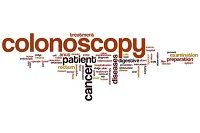Colonoscopy Prep Made Palatable
Patients recommended for screening colonoscopy often resist because the bowel cleansing regimen is unpleasant. In an abstract presented at the 2015 Digestive Disease Week conference in Washington, DC, Campbell Levy, MD, of Dartmouth-Hitchcock Medical Center in Lebanon, NH, and colleagues at other institutions reported on a novel edible product that achieves the desired results.

Patients recommended for screening colonoscopy often resist because the bowel cleansing regimen is unpleasant.
In an abstract presented May 17 at the 2015 Digestive Disease Week conference in Washington, DC, Campbell Levy, MD, of Dartmouth-Hitchcock Medical Center in Lebanon, NH, and colleagues at other institutions report on a novel edible product that achieves the desired results.
In addition to being unpopular with patients, the colonoscopy prep products now in use can be up to 25% ineffective, the team wrote.
“Poor taste and the large volume required are significant impediments to adequate cleansing, resulting in about 5% to 15% of patients not being able to complete the entire preparation,” they said.
Further, studies have confirmed that fear of the preparation is the main reason patients avoid screening.
The new product is a mix of meals, snacks and drinks blended with PEG 3350, sorbitol, an ascorbic acid.
Ten patients with a median age of 61 were enrolled and the study was halted because all of them “had a successful colon cleansing.”
Even 2 who did not consume 100% of the products consumed 95%.
The definition of “excellent” results was “no more than small bits of adherent feces or fluid” and the definition of “good” was a large volume of clear to semiclear liquid.”
Nine patients had a good global assessment of the preparation and 1 an excellent. There were no adverse events and all 10 gave the regimen a score of 1 on a 1-to-5 score where a low number meant the diet was tolerable with no problems.
The team concluded the regimen is feasible, effective, and safe.